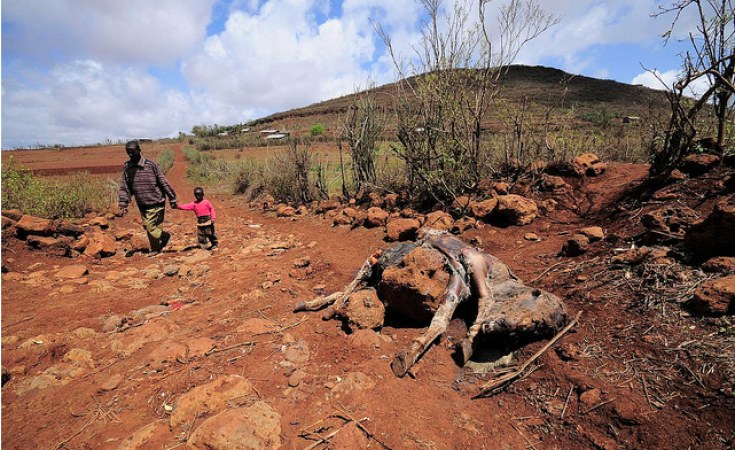The drought situation remained critical in 20 of the 23 ASAL counties during the month of November 2022.
Rains have been reported across the country bringing with it some respite. Unfortunately, in the ASALs, the current shorts rains season has so far underperformed marked by late onset and poor distribution and precipitation amounts. This has raised a real possibility of a fifth failed season.
During the reporting month, only the county of Laikipia slightly improved to Alert phase leaving Thirteen (13) counties namely; Taita Taveta, Isiolo, Kilifi, Kwale, Samburu, Turkana, Wajir, Kitui, Kajiado, Mandera, Garissa, Tana River and Marsabit are in Alarm drought phase.
Seven (7) counties including; Narok, Tharaka Nithi, Makueni, Nyeri, Meru and Laikipia are under Alert drought phase. The remaining three (3) counties including Baringo, West Pokot and Lamu are in Normal drought phase.
The number of people requiring humanitarian assistance still stands at 4.35 million as risks of Acute malnutrition continue to be reported in ASAL counties where 942,000 cases of children aged 6-59 months and 134,000 cases of pregnant or lactating women acutely malnourished continue to access treatment.
“The situation may slightly improve especially on environmental indicators. However, the gains are projected to be short-lived as the country heads into the normal dry spell of January-March 2022,” said Ms Rebecca Miano, Cabinet Secretary for East Africa Community, ASALs and Regional Development.
Kenya is among the Horn of Africa countries affected by the current severe drought in the region that has left millions in across the region, which includes Kenya, Djibouti, Eritrea, Somalia, Sudan, South Sudan and Ethiopia, facing acute food insecurity and malnutrition.
The current pasture and browse condition remained poor. However, distances to water sources for both households and livestock improved as a result of the short rains.
CS Miano said the Government with support from development partners, UN Agencies, other state and non-state actors and the private sector had scaled up targeted response interventions to reach the most vulnerable in the community in the sectors of; food aid/cash transfer, water, livestock, agriculture, health & nutrition, education, peace and security.
“Through the flush appeal by the UN Agencies and efforts by the National Steering Committee on Drought Response, the Government and partners have been able to raise funds to scale up operations in ASALs and to other pockets of non-ASAL counties equally affected by drought,” said CS Miano.
Both National and county governments have spent more than KSh 16 billion on drought response. On the other hand, development partners have together spent over Ksh47 billion.
“In addition to the various resource streams, the Government has also launched an MPesa Paybill for drought response where Kenyans can channel their contributions to the drought response kitty,” said the Cabinet Secretary.
The government continues to monitor the performance of the short rains season to establish the extent to which the season is impacting on the local livelihoods and the recovery rate.


